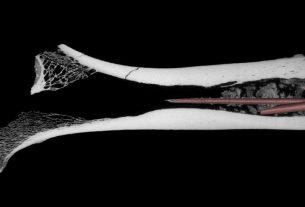Whenever a flashy technology gains notoriety, C-suite leaders turn attention toward the CIO. The head of technology is expected to keep tabs on what their organization needs to operate today as well all tomorrow.
CIOs, leaned on as trusted advisors, are often the most tech-savvy leaders in the room and provide a great deal of insight into business operations as well. As the new year gets underway, expectations of the CIO are only rising.
With their foresight capabilities in mind, CIO Dive asked six leading CIOs to offer up their top enterprise technology predictions. From cloud to AI and software, leaders shared the key changes they expect to see — and what they’re preparing for.
(Responses have been edited for length and clarity)
“Persistent economic uncertainty will push technology into a defensive posture.”
Jeff Sippel
EVP and CIO, Northwestern Mutual
More from Sippel: CIOs will be challenged to find efficiencies in their business while not slowing transformational initiatives. In this environment, vendors who can support both will be winners, while anyone focused solely on transformation might get lost in the shuffle.
“In 2023, companies will take stock of their progress transitioning to the cloud and assess how to extract value from their investments.”

Guido Sacchi, CIO and senior EVP
Global Payments
More from Sacchi: Over the last few years, companies invested heavily in the cloud to drive efficiencies, scale their business and expand their target addressable market. Now they want to make sure they’re optimizing what they have.
Faced with economic headwinds, they’ll be looking for ways to harness the access they now have to their data, using this information to identify trends, adapt their offerings, target customers better and offer more effective promotions.
AI will become table stakes for how organizations and IT departments run their business.

Stephen Franchetti
CIO, Samsara
More from Franchetti: AI has evolved from a sideline experiment to a core part of how most organizations run their business. It’s no longer about whether or not to use AI, but how to realize its value to drive outcomes.
Looking ahead to 2023, we will continue to see a fundamental shift from experimental to ubiquitous and pervasive AI deployments across IT.
Many AI projects fail to deliver on the value they promise. The success of these deployments will rely on choosing use cases that optimize core processes within the organization, and on selecting the right toolkit for the job.
In 2023, the top business challenge for CIOs will be combatting inflationary pressures that increase technology costs, which will grow alongside business needs.

Thomas Phelps
SVP of corporate strategy and CIO at Laserfiche
More from Phelps: With inflation impacting labor costs and software subscriptions, CIOs will continue to make right-sized investments in SaaS solutions, people, and processes to scale their business while providing a flexible, hybrid work environment that supports the employee and customer experience.
For many, this will mean negotiating longer-term agreements with partners and vendors and being extra cautious in avoiding vendor lock-in and automatic renewals.
CIOs’ No. 1 priority in 2023 will be to cut out bloatware.

Prasad Ramakrishnan
SVP of IT and CIO at Freshworks
More from Ramakrishnan: Bloatware is a $84 billion money pit for businesses, and increasingly under scrutiny in a rocky economy. For IT, it means doing more with less, and cutting out discretionary bloatware spend.
Just about every CIO I speak with is planning to review or is already in the process of reviewing their app inventory across the enterprise. It’s important to know which apps should be retired, maintained, replatformed or postponed.
ML and AI adoption will reach new heights to empower data-based decision-making and improve organizational resilience across a variety of sectors, including healthcare.

Michelle Greene
CIO at Cardinal Health
More from Greene: The pandemic and other critical events shined light on the need for predictive technology to turn raw data into real-time insights that help organizations anticipate and mitigate the impact of unexpected events.
With this increased adoption, it’s also essential we are building intelligent systems that can continuously evolve as the needs of our customers and their patients change.



